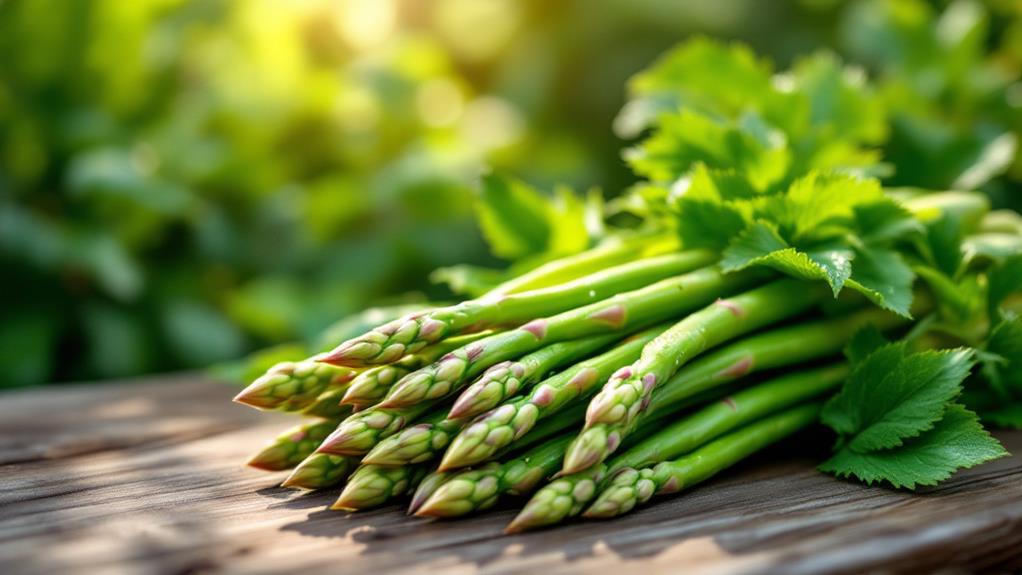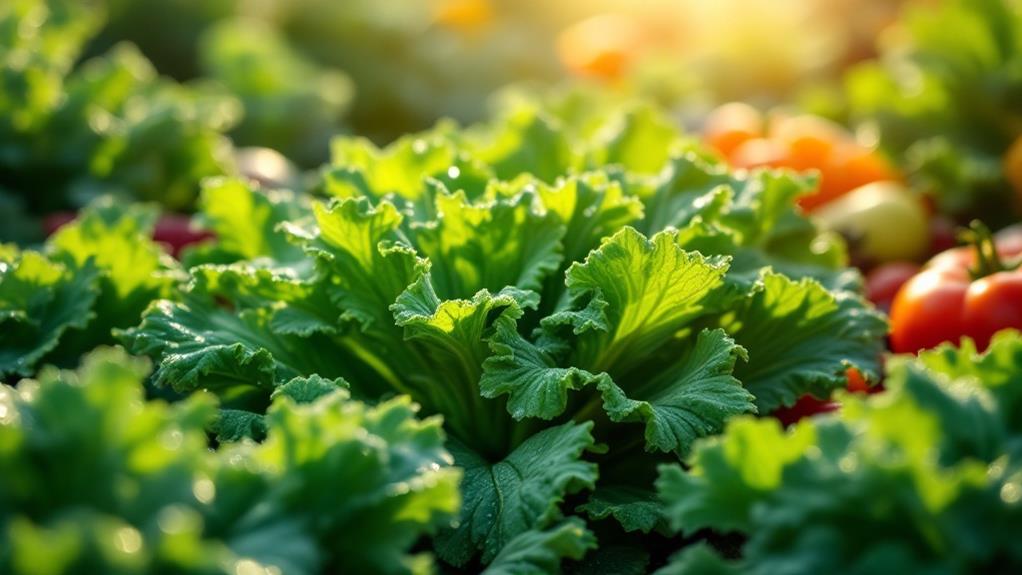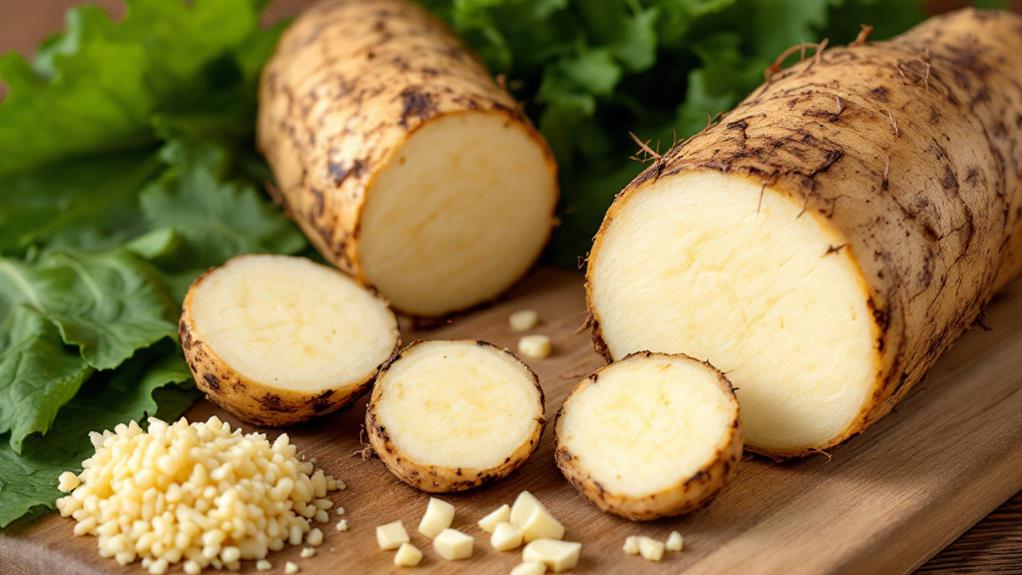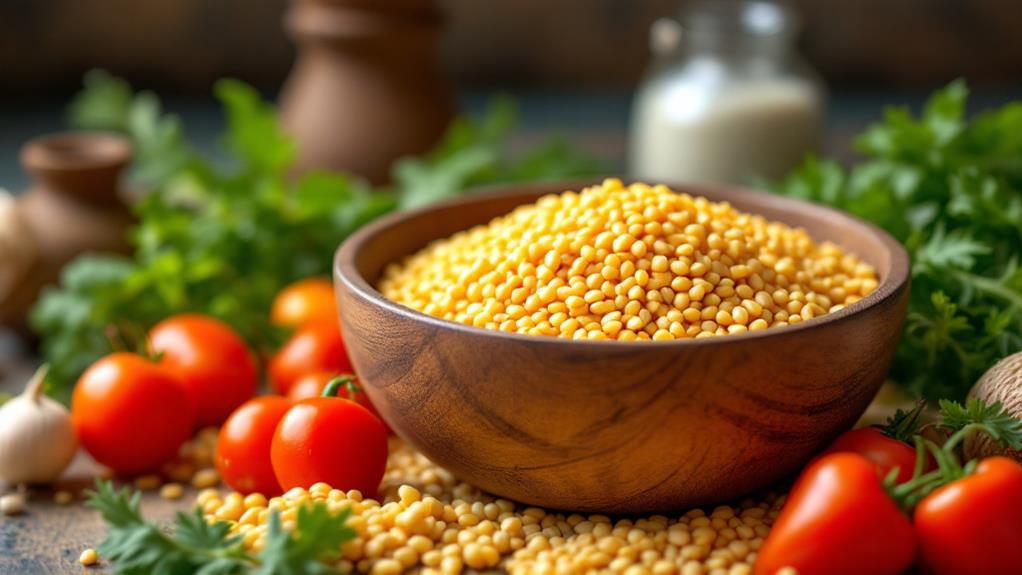Everything to Know About Kaffir Lily: Growing, Uses, and Benefits
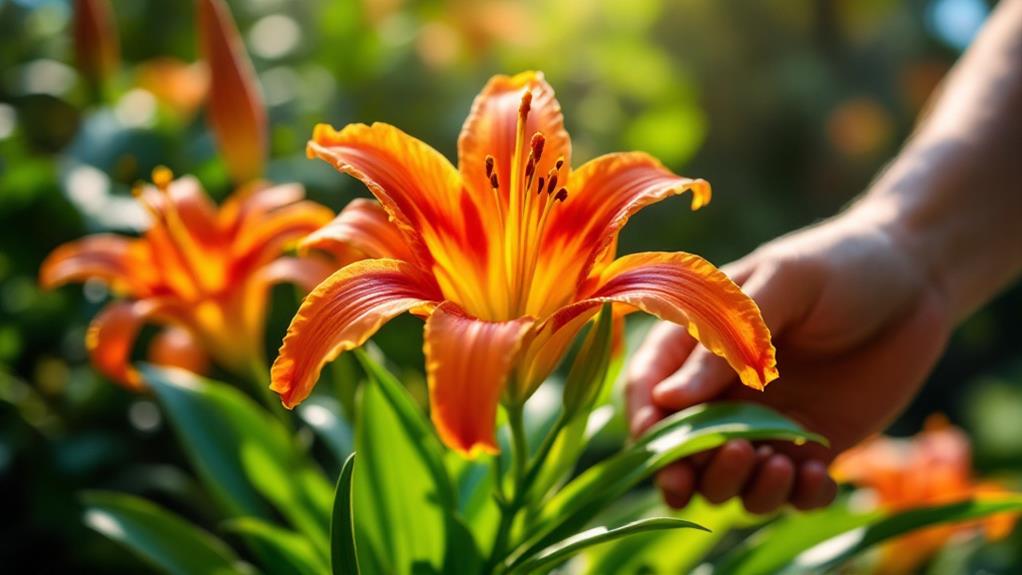
Uncover the Kaffir Lily, or Clivia miniata, with its eye-catching orange trumpet-shaped flowers. Perfect for shaded spots, it thrives in well-drained, acidic soil with indirect sunlight and prefers moderate watering. Be cautious, as it's moderately toxic to humans and pets. Maintenance is easy—just occasional fertilization and vigilance against common pests like aphids. Besides enhancing garden spaces and improving indoor air quality, it symbolizes prosperity. However, its impressive blooms might take up to 5 years to appear. Keep exploring to reveal more about this low-maintenance plant's benefits and care fundamentals.
Overview of Kaffir Lily
Kaffir lily, also known by its scientific name Clivia miniata, is a striking perennial that's native to South Africa. It's celebrated for its lively orange trumpet-shaped flowers and lush green foliage, making it a popular choice for plant enthusiasts. Reaching a height of 18-30 inches, the Kaffir lily blooms in clusters of 20 or more flowers, creating a stunning visual display. However, patience is key, as it typically takes 3-5 years for Clivia Miniata to mature and produce these beautiful blooms.
You'll find that Clivia miniata thrives best in well-draining soil and prefers indirect sunlight. This makes it an excellent choice for both indoor settings and shaded outdoor areas. Its slow growth rate means you can expect only 1-2 new leaves each year, but under ideal care conditions, the plant can live for approximately 10 years.
While Kaffir lily adds a touch of elegance to any space, it's essential to mention that the plant is moderately toxic to humans and particularly harmful to pets. So, if you share your home with animals, exercise caution when choosing where to place your Clivia Miniata.
Growing Conditions and Techniques
When cultivating Clivia miniata, it is important to provide the right growing conditions to guarantee its lively blooms and lush foliage. Start with well-drained, acidic peat soil, enriched with sand, which provides ideal moisture retention and drainage. The amount of light is vital; Clivia miniata thrives in indirect or filtered sunlight. Direct sunlight can damage the leaves, so make certain to place your plant in a spot where it is shielded from harsh rays.
Temperature plays a significant role in the plant's health, too. Maintain an ideal range of 65°F to 70°F during the growing season. As winter approaches, cooler conditions are necessary to support healthy growth and prepare the plant for dormancy. Your watering schedule should be adjusted accordingly; keep the soil moist but not waterlogged during the growing season. Reduce watering to about once a month during the winter dormancy to prevent root rot.
Fertilizing with a phosphorus-rich fertilizer bi-weekly during the growing season will promote robust blooms. However, avoid fertilization in winter to prevent nutrient buildup. By closely managing these conditions, you'll set your Kaffir Lily on the path to lively health and beauty.
Care and Maintenance
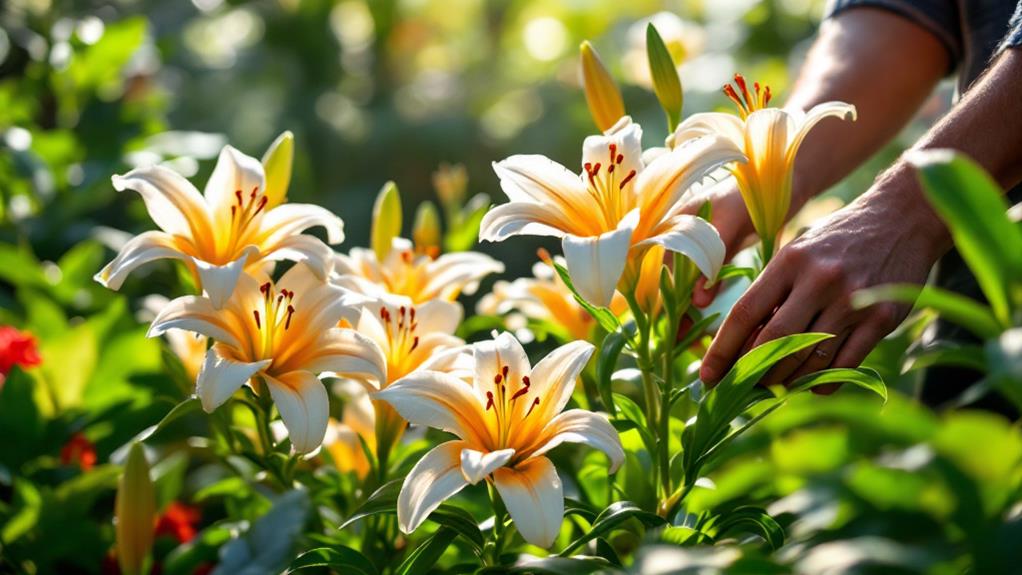
Taking care of your Clivia miniata is straightforward if you follow some key maintenance steps. Start with the right soil type—well-draining soil rich in peat moss and sand is ideal. This guarantees that excess water doesn't linger, preventing harmful root rot. Speaking of water, the watering frequency is vital. During spring and summer, keep the soil consistently moist. However, in winter, when the plant goes dormant, reduce watering to once a month. This adjustment helps avoid overwatering, which can be detrimental.
Lighting is another significant factor. Place your Clivia in a spot with indirect sunlight to protect its foliage and flowers from damage. Temperature matters too; aim for 65°F to 70°F during the growing season and cooler conditions in winter. Fertilize every 14 days with a phosphorus-rich formula during growth and monthly after blooming. Skip fertilization during winter dormancy.
Don't forget to remove dead leaves and flower stems after blooming to keep your plant healthy. Watch out for pests like mealybugs and aphids, using organic treatments if needed. Finally, refresh the soil by repotting every 2-3 years to guarantee peak plant health.
Propagation Methods
Propagation of Clivia miniata frequently involves dividing offsets, a method best performed after blooming to secure success. To begin, gently remove the plant from its pot and separate the offsets, confirming each division has both roots and leaves. This increases the chance of survival and growth. Once divided, plant these in well-draining, peat-based soil to promote healthy root development. Remember, patience is key, as it typically takes 3-5 years for these plants to mature and bloom.
Another effective propagation method is using seeds. Harvest seeds in early spring and sow them in a seed-raising mix. Confirm the conditions are consistently moist for successful germination. Although seed propagation takes time, it can be a rewarding process if you're patient.
Here are some tips for successful propagation:
- Use a well-draining, peat-based soil: This promotes healthy root growth and prevents waterlogging.
- Keep the environment moist but not soggy: Proper moisture levels encourage germination and root establishment.
- Confirm each division has roots and leaves: This is essential for survival and growth.
- Be patient with seed growth: Expect a 3-5 year wait for blooms.
Common Problems and Solutions
In caring for Clivia miniata, you'll likely encounter some common issues, but understanding their causes and solutions can help maintain a healthy plant. One frequent problem is non-blooming, especially if your plant hasn't had a cold rest for three months or is under three years old. Ensuring a proper dormancy period is essential for flowering. Overwatering is another common issue, which can lead to root rot. To prevent this, check the top inch of soil for dryness before watering and reduce watering during winter to avoid waterlogging.
Pests like mealybugs, aphids, and fungus gnats might infest your plant. Combat these invaders with soapy water or organic insecticides to keep your Clivia healthy. Leaf scorch from too much light is also a concern. Position your plant in indirect sunlight and adjust it according to seasonal changes to prevent damage.
Benefits of Kaffir Lily
When you investigate the benefits of the Kaffir lily, you'll quickly uncover its lively orange flowers that brighten gardens from late winter to early spring. These lily plants don't just bring a splash of color; they provide several advantages that make them a cherished enhancement to any home or garden. Their strap-like evergreen leaves improve your indoor spaces by improving air quality, offering both beauty and health benefits.
Kaffir lilies are incredibly low maintenance, making them perfect if you have a busy lifestyle or are new to gardening. They can tolerate neglect and require minimal watering, which means you won't have to fuss over them constantly. Furthermore, these plants thrive under a range of lighting conditions. They prefer indirect light, allowing you to place them in assorted indoor or outdoor settings without worrying about too much or too little sun.
In addition, Kaffir lilies symbolize prosperity and good luck, making them a thoughtful gift or a meaningful enhancement to your home. Here's a quick snapshot of their benefits:
- Vibrant blooms in late winter to early spring
- Improved indoor air quality
- Minimal maintenance requirements
- Ability to thrive in different lighting conditions
Uses in Gardening
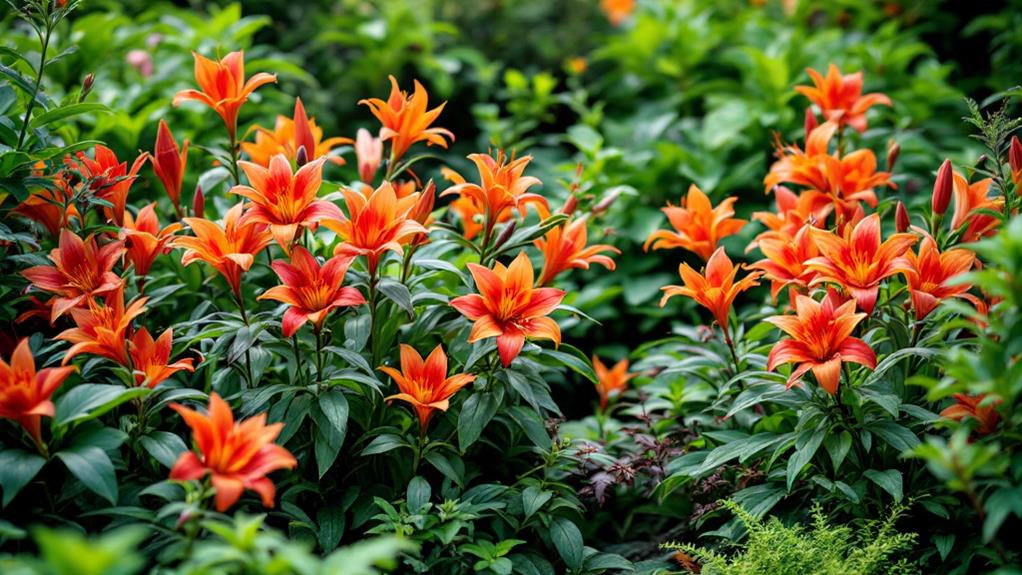
Having investigated the numerous benefits of Kaffir lily, you might wonder how best to incorporate this lively plant into your garden. Start by taking advantage of its bright orange blooms, which brighten up spaces in late winter to early spring, a time when many other plants are dormant. Place Kaffir lilies in shaded garden areas where they can thrive in indirect light and well-drained soil rich in peat and sand. This setup not only guarantees healthy growth but also creates an eye-catching display.
Kaffir lily's strap-like evergreen leaves provide a lush, attractive backdrop that improves both indoor and outdoor aesthetics. If you're looking to boost indoor air quality, consider adding Kaffir lily as a houseplant. Its air-purifying qualities make it an excellent, low-maintenance choice for those keen to enjoy cleaner air with minimal effort.
Moreover, Kaffir lily is incredibly resilient, tolerating neglect and varying conditions, which makes it perfect for novice gardeners. You won't need to fuss over it, but it will reward you with its striking appearance and adaptability. Welcome the beauty and ease of caring for Kaffir lily, and watch your garden transform into a lively oasis.
Toxicity and Safety Precautions
While Kaffir lily's lively beauty can enhance your garden, it's crucial to be aware of its toxicity. Clivia miniata, or Kaffir lily, is slightly toxic to humans, causing nausea and vomiting if ingested. For pets, particularly dogs and cats, the plant poses a more severe risk. Ingestion can lead to symptoms like vomiting, diarrhea, and in extreme cases, even death. To guarantee everyone's safety, you'll need to follow some critical safety precautions.
- Keep out of reach: Place the plant where children and pets can't access it to prevent accidental ingestion.
- Monitor for symptoms: Be vigilant for any signs of nausea or distress in humans and pets, which might indicate exposure.
- Seek medical help: If ingestion occurs, prompt medical or veterinary attention is crucial to address the symptoms effectively.
- Educate family members: Make certain everyone in your household knows about the plant's risks to maintain a safe environment.

